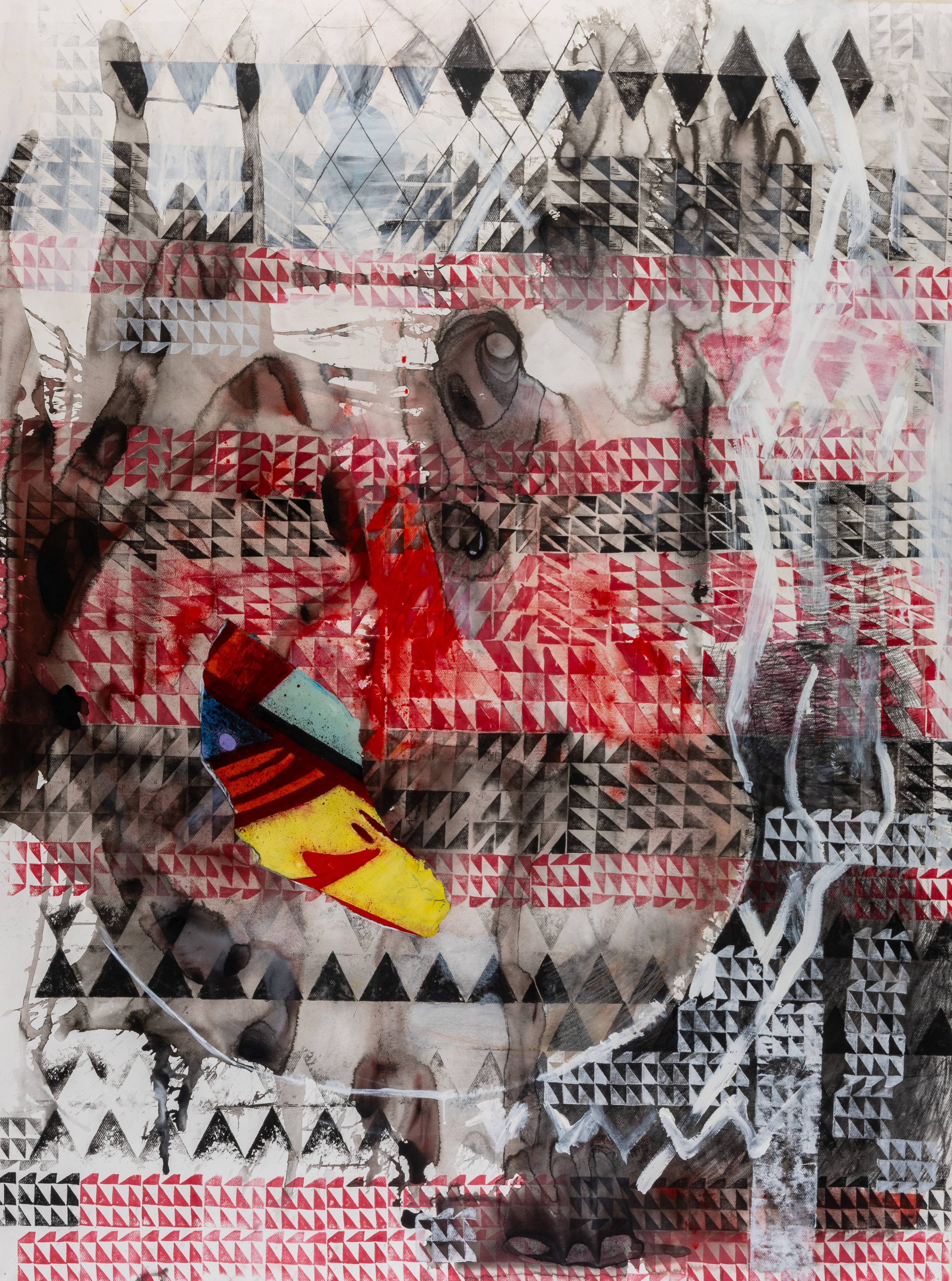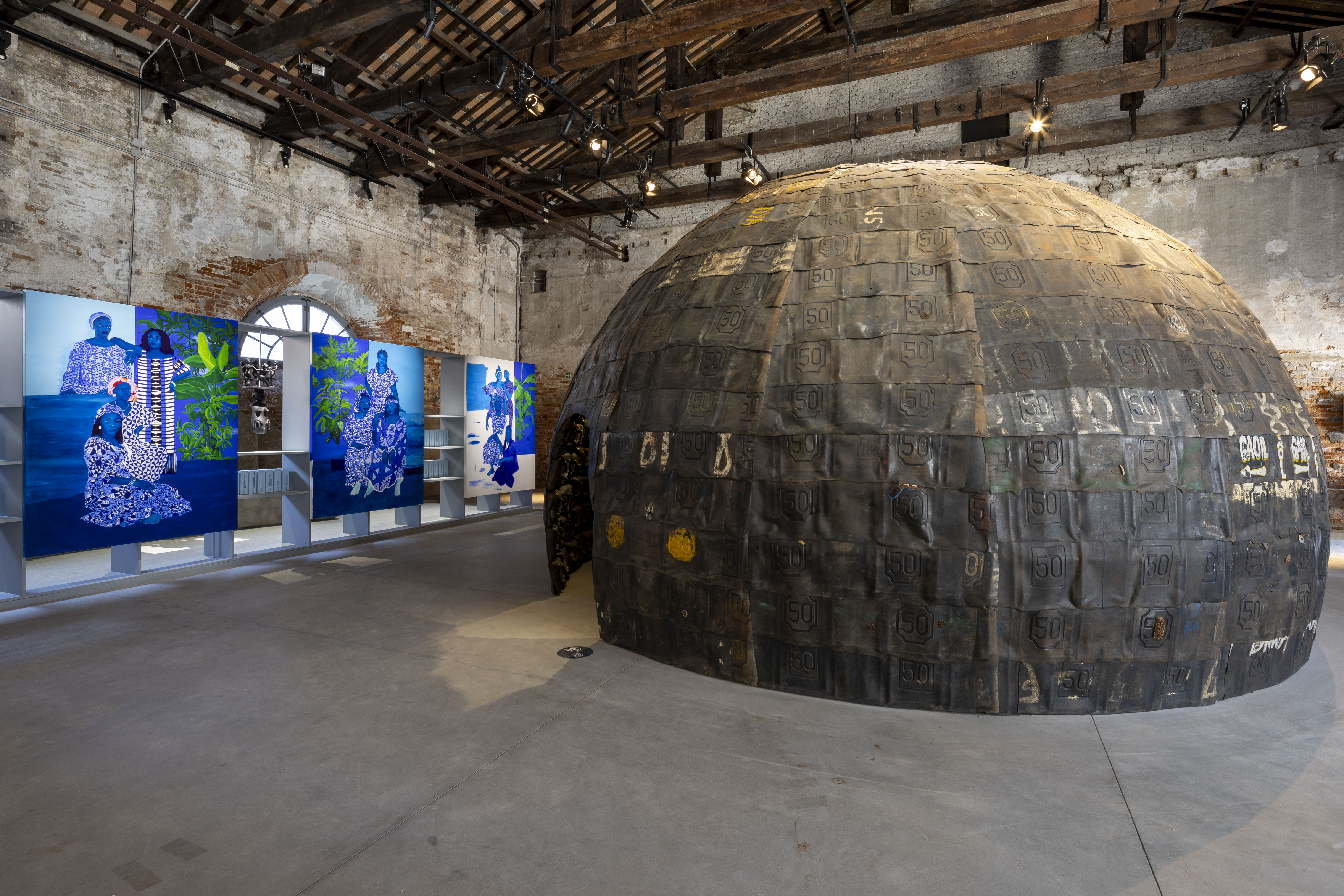Themes like belonging and migration turn many of the African pavilions at the upcoming 60th edition of this international arts arena into a moving experience.
Ethiopia
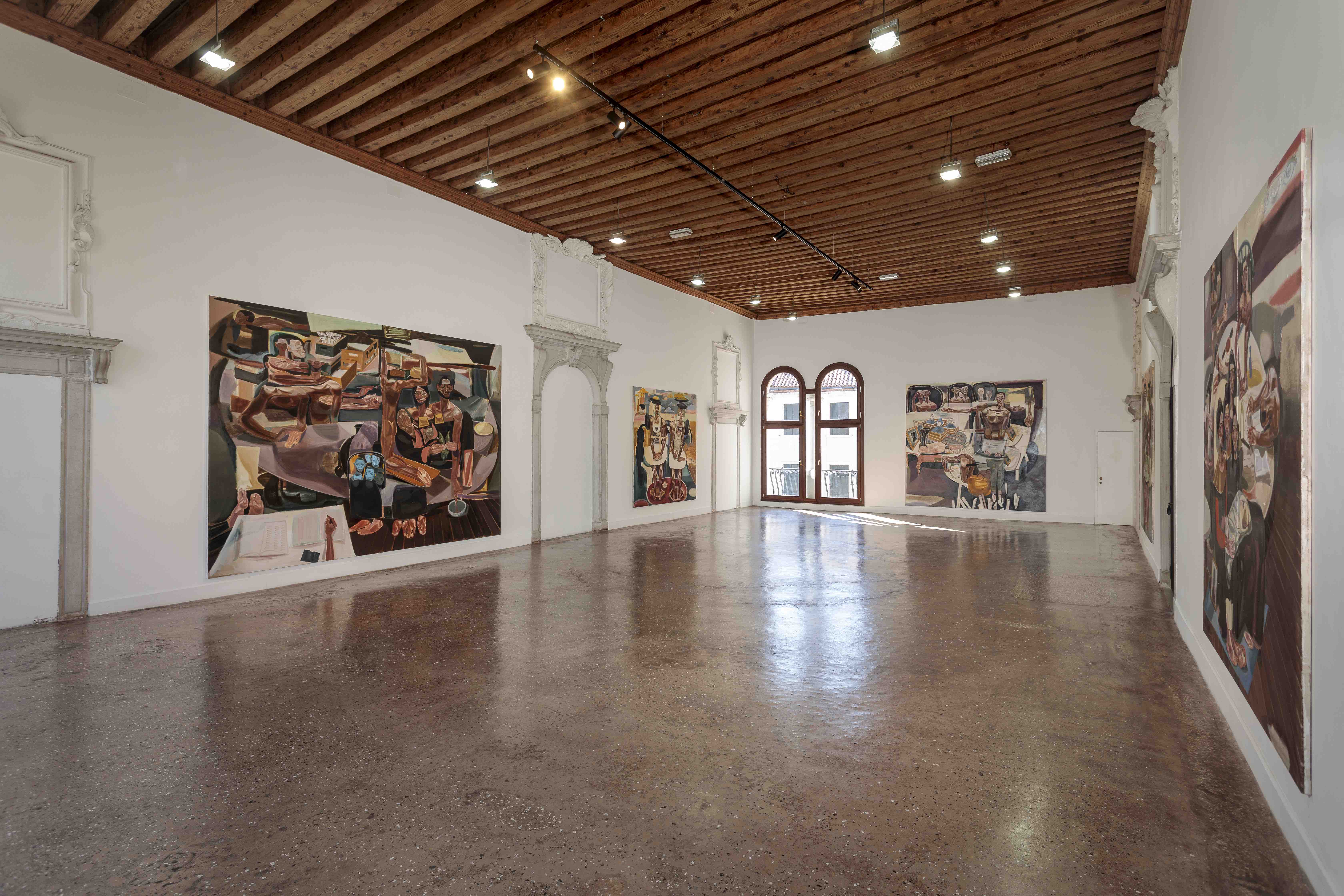
Contemporary artist Tesfaye Urgessa will be the first Ethiopian artist representing his country’s official participation. Award-winning author and broadcaster Lemn Sissay OBE FRSL has been appointed as the curator for this historical moment.
Urgessa (1983, Addis Ababa) studied art and design in Ethiopia’s capital as well as Stuttgart, Germany. His exhibition Prejudice and Belonging in the Ethiopian Pavilion mainly represents his experiences of the thirteen years spent in Germany, “People tend to think I am painting victims in my canvases but it’s completely different. The figures hold all kinds of emotions, fragility as well as confidence. It is the figure presented without any judgement. It is saying this is who I am, this is what I am,” Tesfaye Urgessa told Art Africa.
The works in the exhibtion are centred around Urgessa’s personal experience of migration. They became “a powerful means of expressing the complexities inherent in displacement and cultural identity.” In 2022, Urgessa returned to his hometown Addis Ababa where he continues to work.
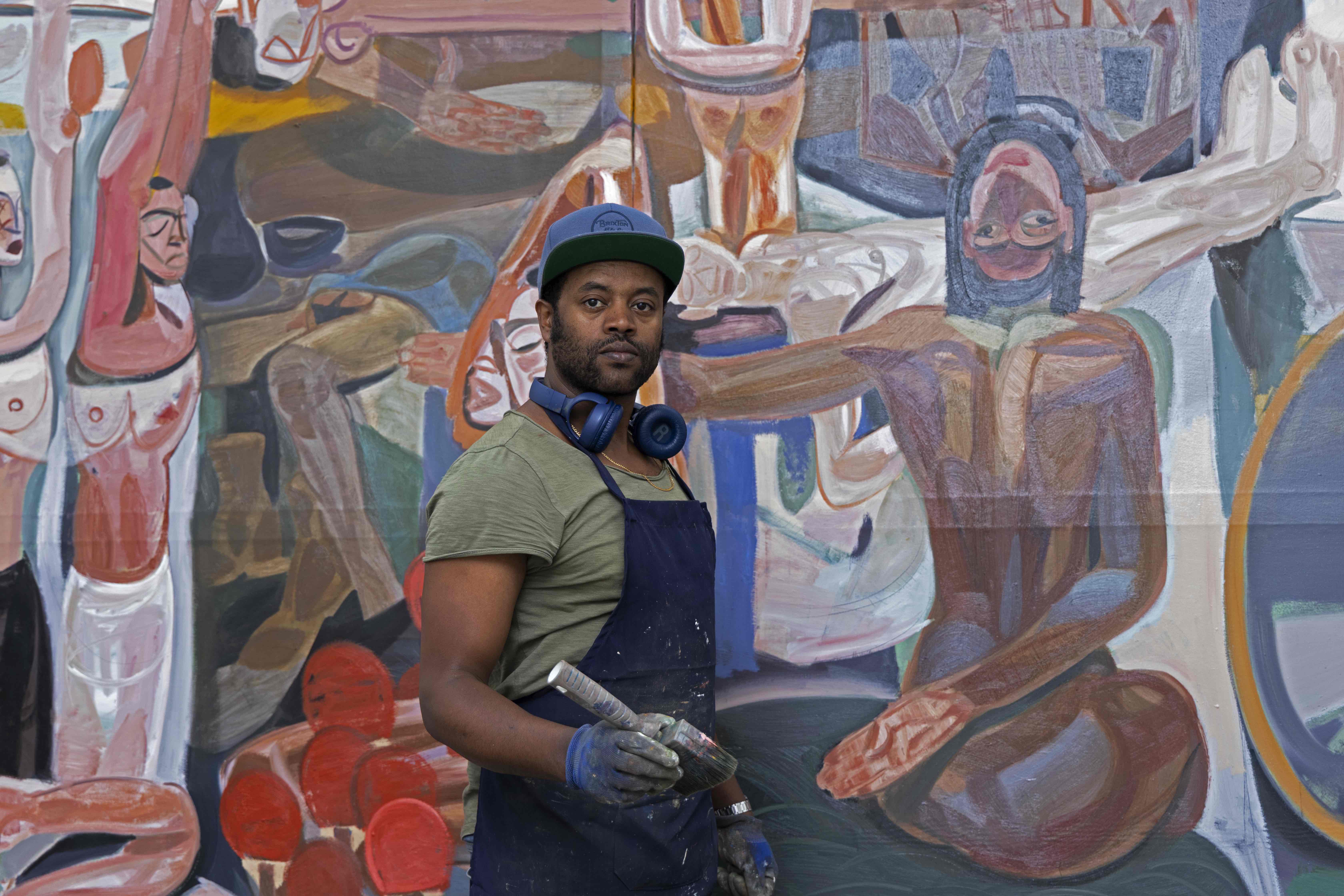
On his participation in the 60th edition of the Venice Biennal, Urgessa says: “I believe that this is the start of a new era for Ethiopian art, and I am excited to be part of it.”
The exhibition’s curator Lemn Sissay is as excited as the artist. “It is a great day for Ethiopia and Venice that this is the first Ethiopia Pavilion at La Biennale di Venezia 2024. Art is deeply rooted in Ethiopian culture from the coffee ceremony to the ancient Christian iconography. Contemporary Ethiopian art is rising in prominence and stature throughout the world. It is evident in music, in literature, in photography and in art. Tesfaye Urgessa is the artist on the crest of this wave. Come to Palazzo Bollani, take a closer look and enrich your world”, Sissay told Art Africa.
Cameroon
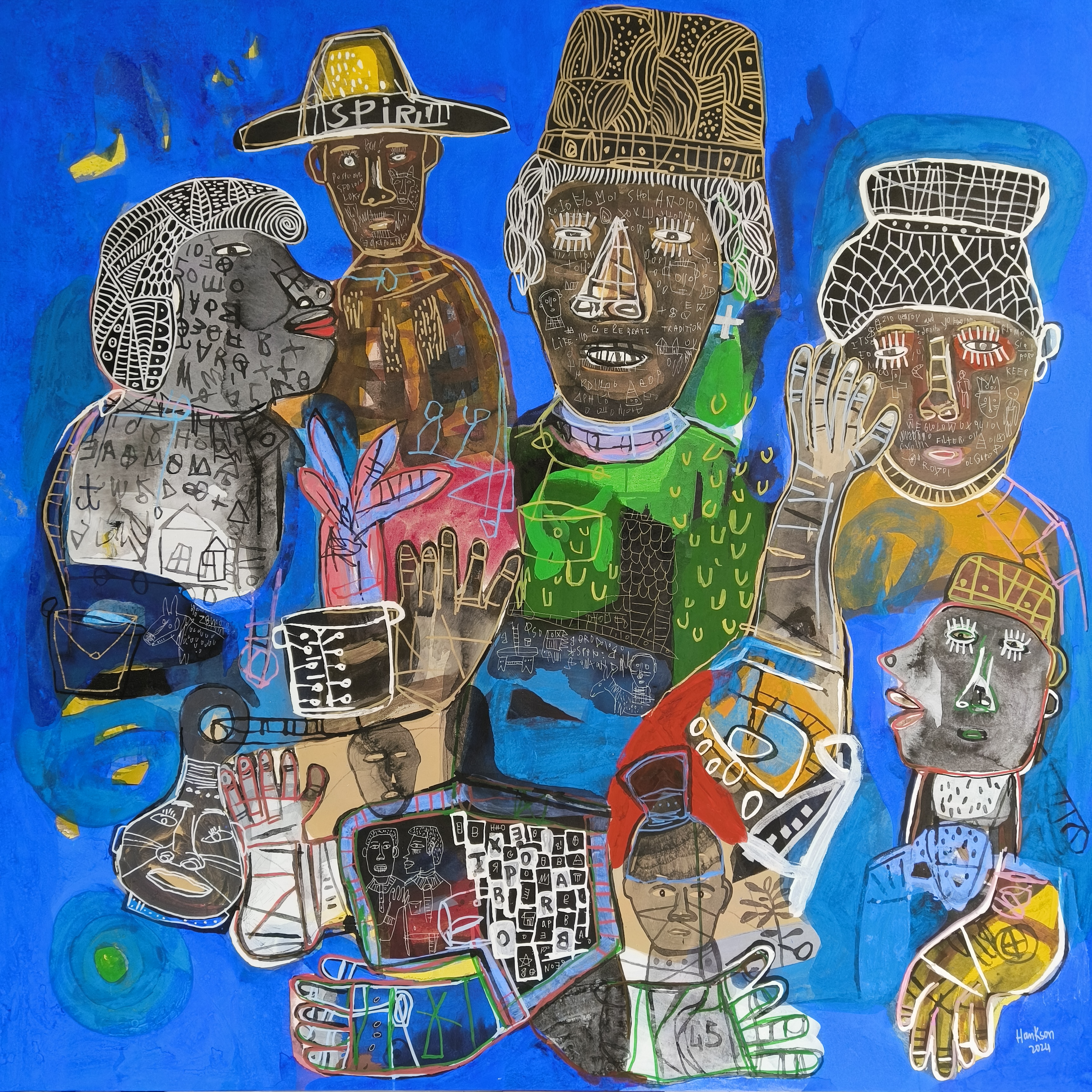
After its debut in 2022, Cameroon returns to the 60th Venice Biennale with “Nemo propheta in patria.” The curators invited 5 Cameroonian artists and 8 international artists from Italy, Germany, the Netherlands, France, Colombia, and China.
The local artists include Guy Wouete, Jean Michel Dissake, Hako Hankson, Kendji & Ollo Arts and Patrick-Joël Tatcheda Yonkeu while the international lineup features Angelo Accardi, Julia Bornefeld, Cesare Catania, Adélaïde Laurent-Bellue, Franco Mazzucchelli, Rex and Edna Volcan, Giorgio Tentolini, and Liu Youju.
Interestingly, Cameroon is the first to realise a Carbon Net Zero exhibition, acting in two complementary directions: policies for reducing emissions and reusing materials will be implemented, and all aspects related to the exhibition will be measured using GHG standards to calculate the CO2 emissions emitted and offset them by planting certified trees to create a new forest in Cameroon.
The exhibition project led by commissioner Serge Achille Ndouma and curators Paul Emmanuel Loga Mahop and Sandro Orlandi Stagl has a Latin saying – “Nemo propheta in patria” (No one is a prophet in their land) – at its motto. This emphasizes the circumstance that rarely does a person enjoy prestige and recognition in the place where they were born and where everyone knows them. On the contrary, it is more likely to happen elsewhere, among strangers. In this context, ArtAfrica writes, a prophet is simply a person misunderstood by their contemporaries and compatriots because of their dissonant nature. A prophet stands out for an ability to see beyond, to see what others do not see, to anticipate the times, and to think differently from the masses. This is why prophets are are often misunderstood, especially in their community of origin, where there is a greater expectation of conformity to the “norms” of the group.
So many historical cases in which enlightened individuals have had to change countries due to opposition to their ideas or beliefs or have only been recognised after death! Art has always been at the forefront of overcoming discrimination and spreading ideas in every social and geographical context.
Egypt
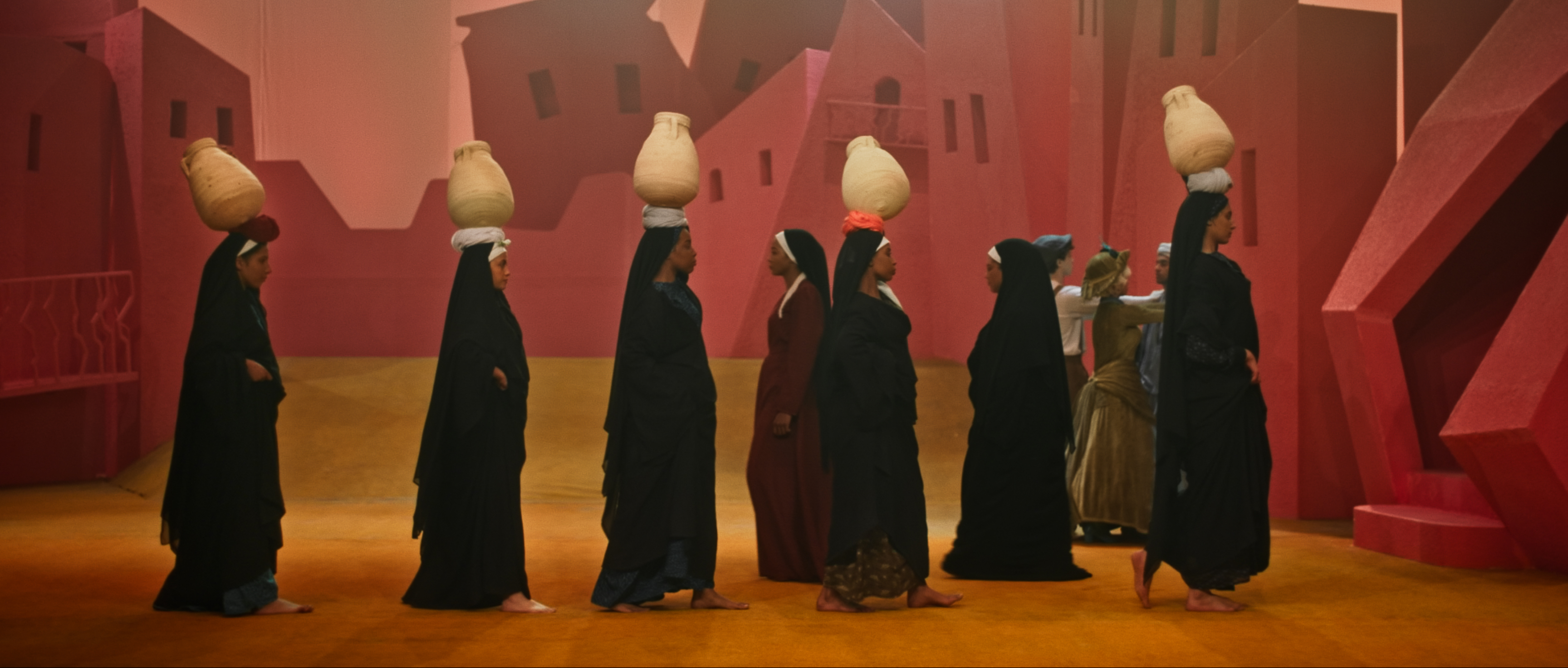
Shawky is a natural storyteller. He crosses borders between film, performance, painting, drawing and sculpture inverts, rewframing contemporary culture through the lens of historical tradition and events.
For this year’s Biennale, Shawky has created Drama, 1882, a filmed rendition of an original musical play directed, choreographed, and composed by the artist, around Egypt’s nationalist Urabi revolution against imperial influence (1879-1882). In its final year this revolt was crushed by the British, who then went on to occupy Egypt until 1956. “There was a revolt led by the Egyptian Colonel Ahmed Urabi and his army against the Egyptian monarch, calling him a traitor because he fell prey to the British and French. The interesting thing about this discourse is the idea of the foreigners – what does it mean to be ‘foreigners’? Who were they? They were the occupiers – it was not the idea of immigrants that we have today”, Shawky says in an interview with ArtAfrica “Sung in classical Arabic by professional performers, There is no theatrical performance in ‘Drama 1882’. The background is moving in slow motion, as if in layers. In the end this makes the work like a moving painting, with the performers and soundtrack being elements in this composition. The word ‘drama’ has many implications: it conjures a sense of entertainment, the sense of catastrophe and our inherent doubt in history.”
The film is accompanied by vitrines, sculpture, paintings, drawings and a mirror relief made in Murano.
Benin
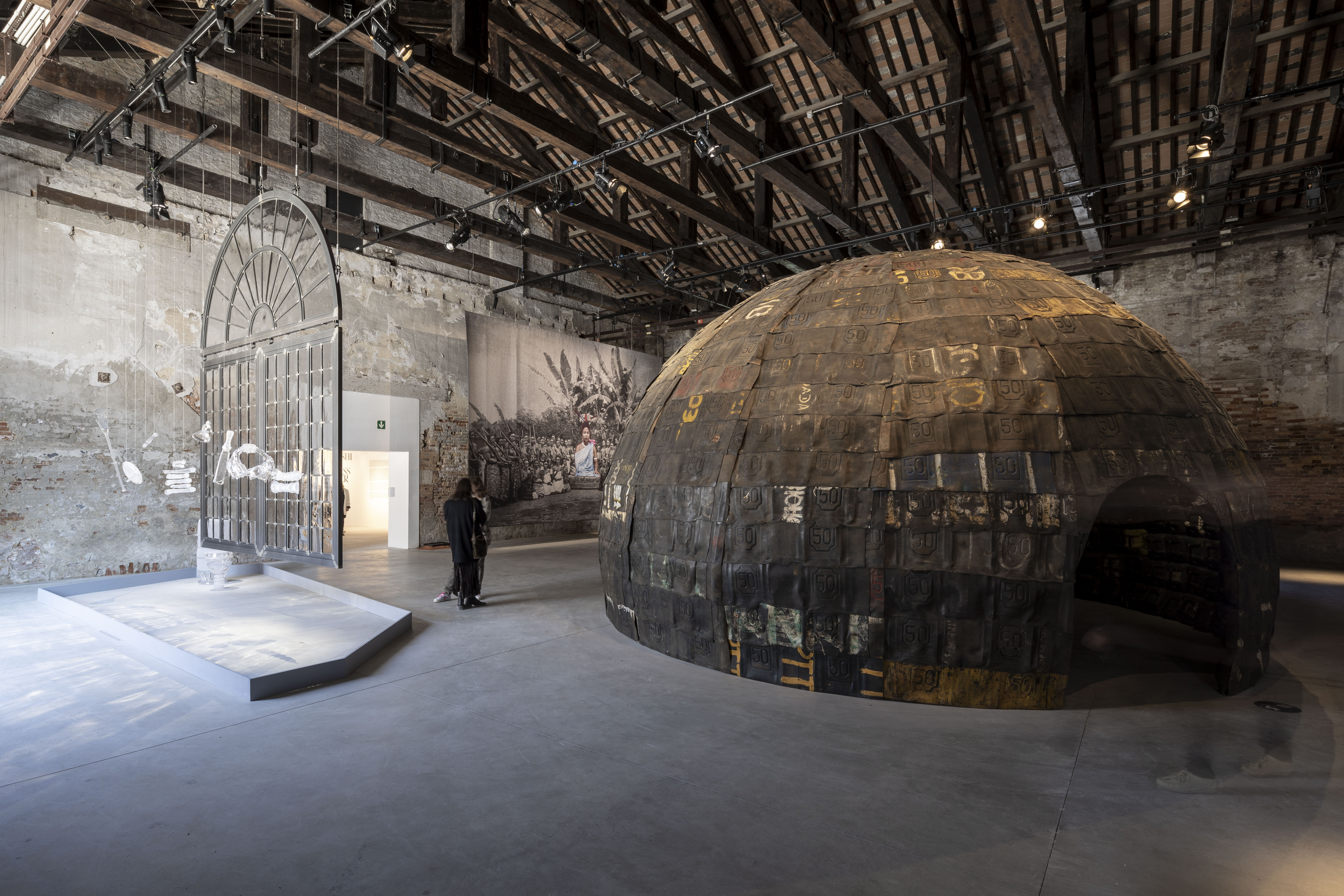
The works of Moufoulo Bello are often set in batik-blue. Exploring the desires and limitations of women in contemporary Beninese society, Bello took photos of tailors, hairdressers, and family members near her studio in the country’s largest city, Cotonou. The images speak for themselves; it is just impossible to see secondary citizens. In the artist’s words: “(They) blossom in front of the camera.” Bello is clearly inspired by the traditional Gelede dance ceremony in Yoruba-Beninese culture, focusing on motherhood as well as a decision-making capacity once given to women like her grandmother.
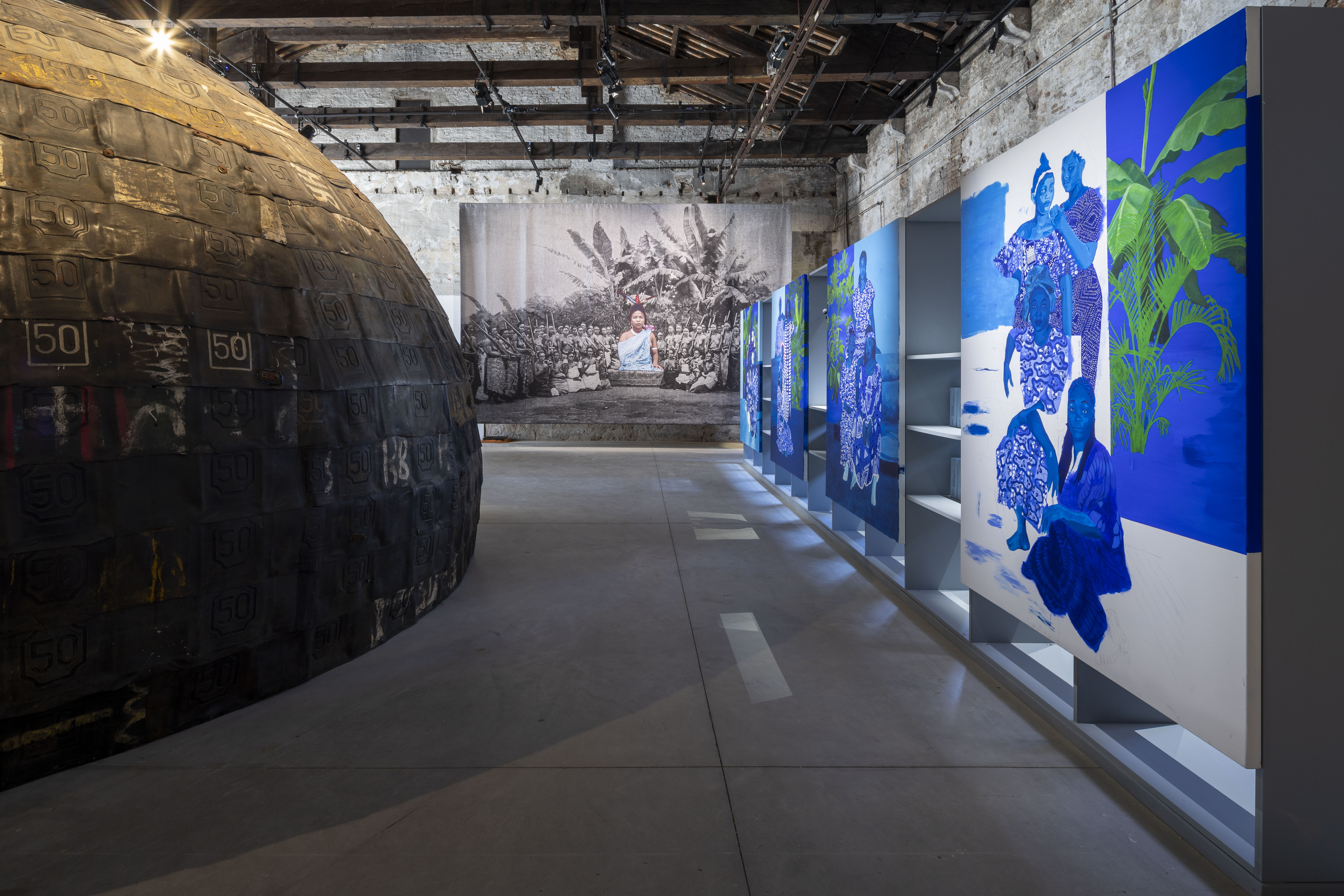
Gelede is one of the four themes in Benin’s first show at the Venice Biennale. Everything Precious as Fragile, as the exhibition is aptly named, also deals with slave trade, the (recently rehabilitated) Vodun religion, and the Amazon or Agojie women. Under the curatorship of Yassine Lassissi and Azu Nwagbogu, the works of Bello enter a conversation with the creations other artists represented: Romual Hazoumé, Ishola Akpo, and Chloé Quenum.
Benin’s spectacular arrival in Venice is a clear demonstration of the country’s artistic renaissance. Benin’s new museum infrastructure – culminating in four new museum projects over the next five years – as well as increased investment in arts education and the return of royal artefacts are part of an agenda by Beninese President Patrice Talon to make art a “second pillar” of the economy, after agriculture. But art speaks to the imagination of people, inspires questions, criticisms and conversations which can undermine power. Especially if this power abuses the justice system, provokes deadly police violence at political protests, arrests activists, and restricts other civil liberties, as is the case in recent years in Benin.
Uganda, Kenya, Ivory Coast, DRC, Zimbabwe, Nigeria, South Africa and Senegal will also be represented at Venice. For information about the artists and curators check out this article on ContemporaryAnd.
South Africa
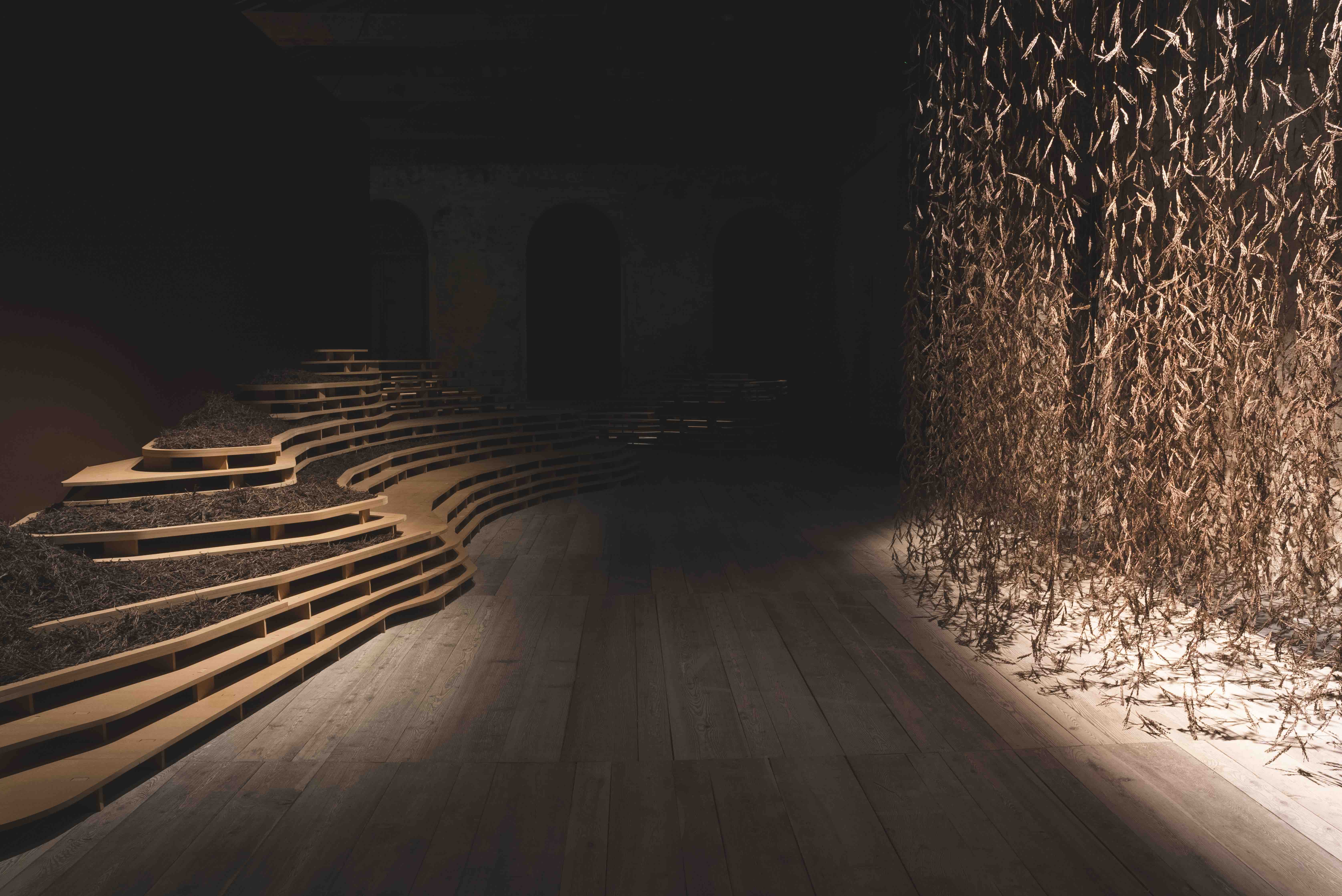
Nigeria

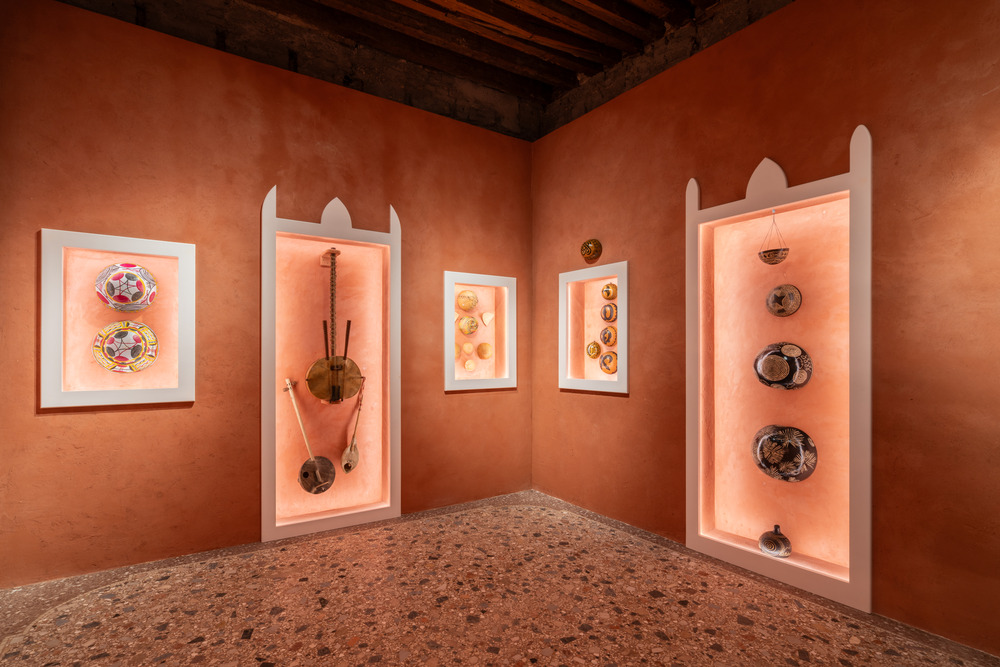
Zimbabwe
